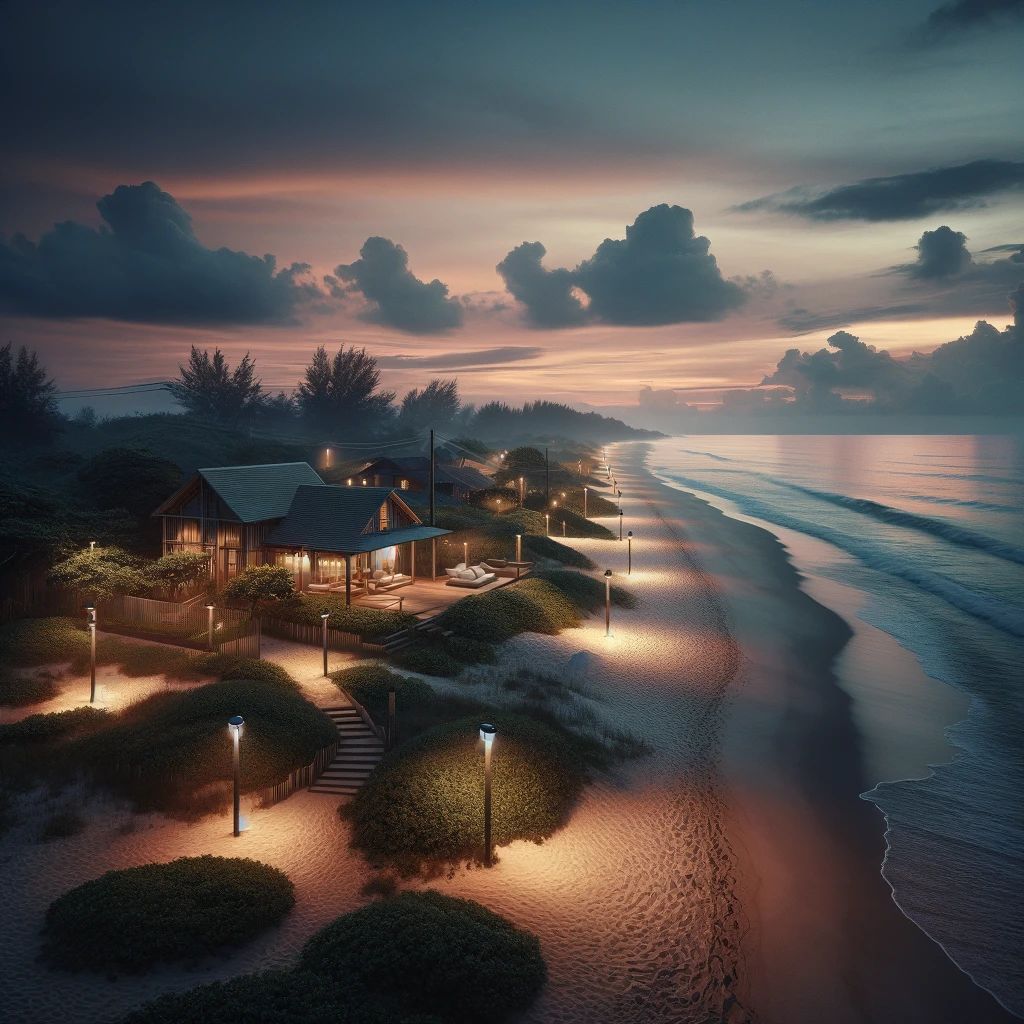In the gentle luminescence of the moonlight, sea turtles have navigated the ocean’s mysteries for millions of years. Yet, as our coastlines glow brighter with human habitation, these ancient mariners face a modern peril—light pollution. Enter the heroes of our story: turtle-friendly exterior lights. These aren’t just any lights; they’re beacons of hope for the preservation of sea turtles, designed to guide us in harmonizing our love for coastal living with the natural world. Let’s embark on a journey to discover how these lights are illuminating the night in ways that are kind to our shelled friends, ensuring the dance between civilization and nature continues in a balanced choreography.
Why Do You Have to Shut the Lights Off for the Turtles in Florida?
Before we dive deeper into the world of turtle-friendly lighting, let’s address a pressing question: why the focus on Florida and its lights? Well, it’s simple. Florida’s beaches are a prime nesting ground for several species of sea turtles, creatures that have graced our oceans for centuries. When hatchlings emerge from their nests, they rely on the natural light of the moon reflecting off the ocean to guide them to safety. Artificial lights, unfortunately, can disorient these tiny travelers, leading them away from the water and into danger.
The Role of FWC Turtle Lighting
The Florida Fish and Wildlife Conservation Commission (FWC) steps in here with guidelines for turtle-friendly lighting. These aren’t just arbitrary rules; they’re a lighthouse guiding our efforts to ensure our coastal activities don’t dim the future of sea turtles. FWC-approved lighting minimizes the impact on these marine creatures, helping them navigate the critical first moments of their journey with less interference from artificial light sources.
Are Red Lights OK for Turtles?
Ah, the question of color! Yes, certain colors are less disruptive to turtles, and red lights often come up in discussions. The reason? Sea turtles are less sensitive to long-wavelength light, such as red or amber. Thus, using red lights for exterior purposes can be a part of a turtle-friendly lighting plan. However, it’s not just about color; the placement and shielding of lights play a crucial role in minimizing impact. Read more about A Beacon of Hope: Navigating the Waters of Sea Turtle-friendly Lighting here.
Creating a Turtle-Friendly Oasis: How to Choose and Use Exterior Lights
Now that we’ve set the stage, let’s get into the nitty-gritty of creating a turtle-friendly ambiance with your exterior lighting:
*Opt for FWC-approved fixtures: Start with lights that have the seal of approval from the FWC. These are designed to minimize sky glow and light trespass, reducing disorientation for hatchlings.
*Shield your lights: Make sure your lights are pointing down and are properly shielded. This prevents light from spilling onto the beach and into the turtles’ nursery.
*Choose long-wavelength lights: Embrace the warmth of red or amber lights. These hues are less likely to lead hatchlings astray. Read more about True Amber LED Lights That Protect Coastal Habitats
*Keep it low and shielded: The mantra for turtle-friendly lighting. Low-wattage lights reduce the intensity of the illumination, and shielding focuses the light where it’s needed, keeping it away from the beach.
 |
Incorporating Turtle-Friendly Exterior Lights in Your Decor
Who says being eco-friendly can’t be stylish? Here are a few tips for integrating turtle-friendly lights into your exterior decor:
*Pathway Lighting: Use low, shielded lights to illuminate paths. This provides guidance for humans while being considerate of our turtle friends.
*Accent Lighting: Highlight your garden’s features with directional, shielded lights. This adds charm without contributing to light pollution.
*Ambient Lighting: Create a cozy atmosphere with shielded, warm-colored lights. Perfect for outdoor living areas, these lights enhance the ambiance while being turtle-friendly.
FAQs on Turtle-Friendly Exterior Lights
Q: Can I use turtle-friendly lights even if I don’t live near the beach?
A: Absolutely! Turtle-friendly lights are not only beneficial for turtles but also contribute to reducing overall light pollution. They’re a thoughtful choice for any outdoor space.
Q: Are turtle-friendly lights more expensive?
A: While some turtle-friendly options may have a higher upfront cost, they’re often more energy-efficient, leading to savings over time. Plus, the price is a small investment in preserving our natural heritage.
Q: How do I know if a light is FWC-approved?
A: FWC provides a list of certified fixtures and bulbs on its website. Look for products that specifically mention compliance with turtle-friendly standards.
Conclusion
Embracing turtle-friendly exterior lights is more than just an eco-conscious choice; it’s a testament to our ability to live in harmony with the natural world. By choosing lights that guide rather than mislead, we participate in a legacy of conservation that ensures the survival of these ancient mariners for generations to come. So, as you ponder your next exterior lighting update, remember the turtles. Their future, in part, shines in the balance of our choices. Together, let’s light up the night in a way that’s as friendly to the turtles as it is illuminating for us.
Your message has been sent
